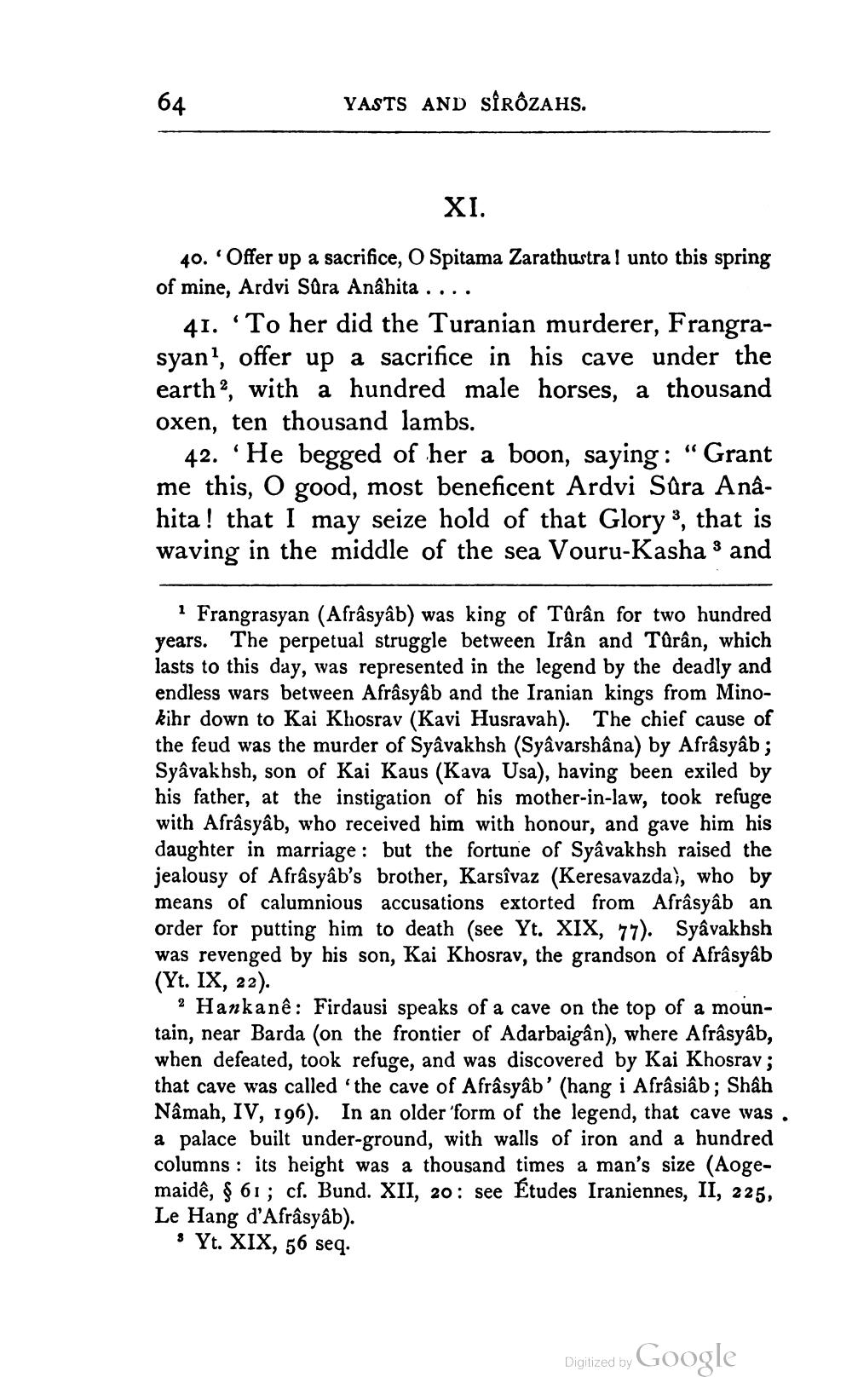________________
YASTS AND STRÔZAHS.
XI. 40. 'Offer up a sacrifice, O Spitama Zarathustra ! unto this spring of mine, Ardvi Sûra Anâhita ....
41. To her did the Turanian murderer, Frangrasyan?, offer up a sacrifice in his cave under the earth?, with a hundred male horses, a thousand oxen, ten thousand lambs.
42. 'He begged of her a boon, saying: “Grant me this, O good, most beneficent Ardvi Sara Anâhita! that I may seize hold of that Glory 3, that is waving in the middle of the sea Vouru-Kasha S and
Frangrasyan (Afrasyâb) was king of Târân for two hundred years. The perpetual struggle between Iran and Tūrân, which lasts to this day, was represented in the legend by the deadly and endless wars between Afrasyâb and the Iranian kings from Minokihr down to Kai Khosrav (Kavi Husravah). The chief cause of the feud was the murder of Syâvakhsh (Syâvarshậna) by Afrâsyâb; Syâvakhsh, son of Kai Kaus (Kava Usa), having been exiled by his father, at the instigation of his mother-in-law, took refuge with Afrâsyâb, who received him with honour, and gave him his daughter in marriage : but the fortune of Syâvakhsh raised the jealousy of Afrâsyâb's brother, Karsîvaz (Keresavazda), who by means of calumnious accusations extorted from Afrâsyab an order for putting him to death (see Yt. XIX, 77). Syâvakhsh was revenged by his son, Kai Khosrav, the grandson of Afrâsyâb (Yt. IX, 22).
? Hankanê: Firdausi speaks of a cave on the top of a mountain, near Barda (on the frontier of Adarbaigân), where Afrâsyâb, when defeated, took refuge, and was discovered by Kai Khosrav; that cave was called the cave of Afrâsyâb' (hang i Afrâsiâb; Shâh Nâmah, IV, 196). In an older 'form of the legend, that cave was a palace built under-ground, with walls of iron and a hundred columns : its height was a thousand times a man's size (Aogemaidê, § 61; cf. Bund. XII, 20: see Études Iraniennes, II, 225, Le Hang d'Afrâsyâb).
8 Yt. XIX, 56 seq.
Digitized by Google




